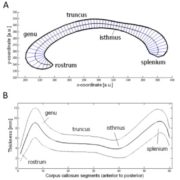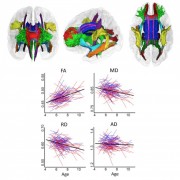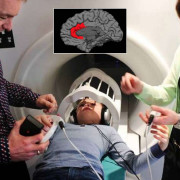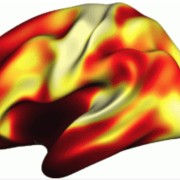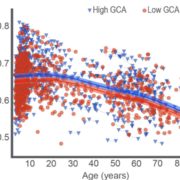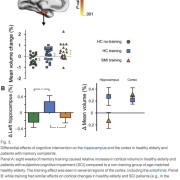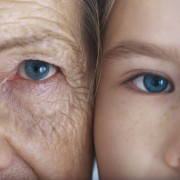Poor sleep quality and Alzheimer’s biomarkers
Sleep is associated with many beneficial brain processes, including the strengthening of synaptic connections that correspond to memories and learnt material, and the clearance of potential neurotoxic proteins.
As we get older we have a general tendency to sleep less. Previous work in our lab has demonstrated an important link between self-reported poor sleep quality and accelerated brain atrophy in widespread regions across the cortex, indicating that brain atrophy may be a cause or a consequence of sleep problems as we age.
The accumulation of a peptide known as β-amyloid (Aβ) is perhaps the most established biomarker for Alzheimer’s disease to date, as its occurrence often predates cognitive decline in the ageing brain. Evidence also suggests that Aβ accumulation links with problems sleeping. In a new study, LCBC researchers used measurements of Aβ and other established Alzheimer’s biomarkers taken from the cerebrospinal fluid—the clear liquid encasing the brain and spinal cord—together with measurements of brain atrophy, memory and depression, to test whether these predicted sleep problems in cognitively healthy older adults.
Results indicated that higher levels of a biomarker associated with degeneration in the brains axons, Tau, and a marker associated with neuroinflammation, YKL-40, predicted sleep problems, only in healthy adults with Aβ. Poor sleep quality was also uniquely related to poorer memory functioning, higher depression scores and more extensive brain atrophy.
The findings underscore the importance of understanding the role that sleep plays in age-related brain- and cognitive changes that are associated with pathology and increased risk for Alzheimer’s disease.
Citation


